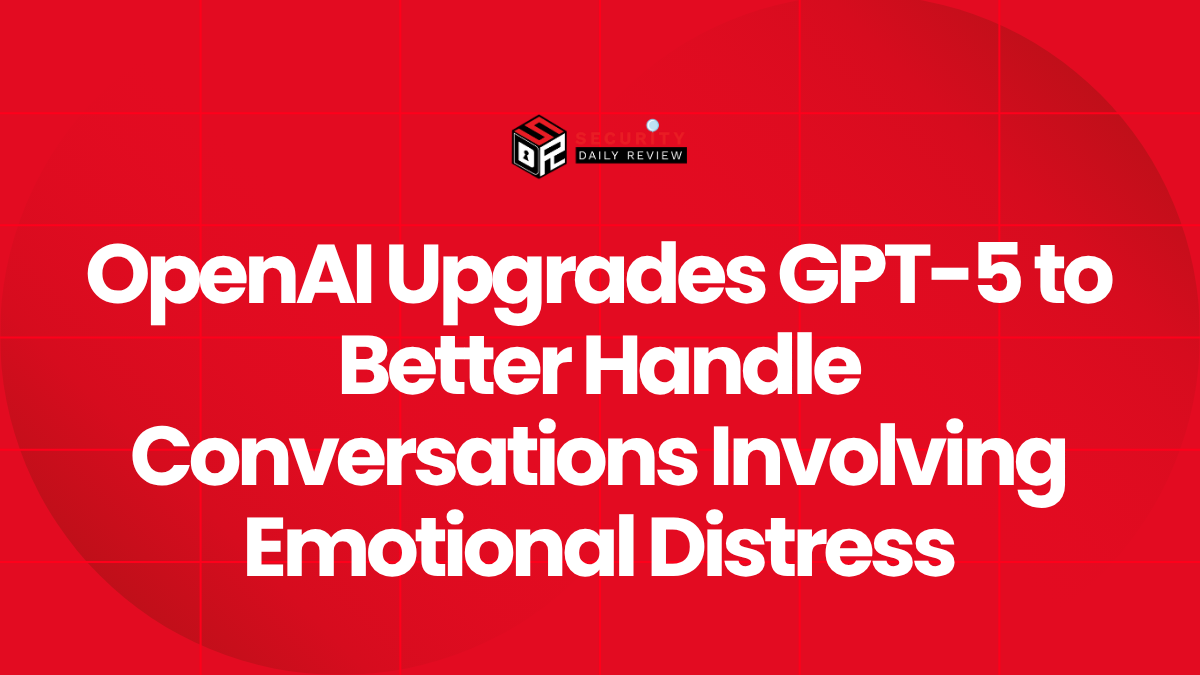OpenAI has rolled out a significant update to its large language model, GPT-5 aimed at improving the model’s performance in responding to emotionally charged queries—particularly those involving mental health crises. Shipped on October 5, the upgrade emphasizes enhanced safety protocols designed to reduce the risk of harm in sensitive conversations by making the AI more responsive and less likely to engage in dangerous behavior when users express emotional distress.
Update Improves AI Content Moderation During Sensitive Interactions
OpenAI, long criticized for both under- and over-moderating certain interactions, now appears to be shifting its focus toward more thoughtful content moderation in emotionally complex scenarios. This latest modification is focused squarely on improving how the model responds to users expressing signs of mental distress or suicidal ideation—topics that require careful language understanding and responsible response behavior.
Intent of the GPT-5 Update is Preventative and Respectful
Instead of offering therapeutic guidance or acting as a replacement for human professionals, the refined GPT-5 model aims to:
- Gently redirect users toward professional help
- Avoid triggering or exacerbating distress
- Steer away from making speculative or high-risk decisions
The model has been increasingly tuned to not only avoid giving unsafe advice but also to recognize conversational patterns and language associated with psychological crises. This signals a broader shift in OpenAI’s moderation strategy: ensuring that language models operate within their domain of competence without taking unnecessary risks.
Building Guardrails for Safety and Trustworthiness
The October 5 update is part of OpenAI’s continued investment in safety-by-design mechanisms. By embedding new safety protocols directly into the model’s response generation functions, OpenAI targets issues that prior versions either side-stepped too conservatively or mishandled due to ambiguity in intent signals.
Instead of issuing flat rejections for any mention of sensitive topics—an approach some users found dismissive—GPT-5 now attempts to:
- Acknowledge the emotional tone of the user input
- Respond with empathetic, neutral support language
- Offer suggestions to seek professional care without diagnosing
These redesigned interaction patterns may reduce the perception that the AI is “shutting down” emotionally vulnerable users, while still maintaining strong ethical safeguards.
Moderation Improvements Reflect Research and Public Pressure
This update likely stems from both internal research priorities and external scrutiny. Public concerns about generative AI’s ability to handle suicidal ideation, mental illness, or abuse disclosures have grown in recent years, especially as models become more realistically conversational. Critics have highlighted the dangers of models providing harmful or overly assertive guidance in scenarios where real-time human judgment is essential.
By iterating on such feedback, OpenAI is attempting to:
- Navigate the nuanced boundary between utility and safety
- Preserve user autonomy while avoiding harmful engagement
- Build trust by transparently limiting the model’s role in high-risk scenarios
These goals reflect industry-wide efforts toward explainable, auditable AI systems—especially in contexts involving personal well-being.
Broader Implications for AI-Assisted Mental Health Interactions
The October update also positions OpenAI in alignment with recent debates around AI in mental health. While the company notes that GPT-5 is not a therapeutic model, improvements to sensitive interaction handling can indirectly affect how the tool is perceived in real-world use, particularly in areas like:
- Mental health support interfaces
- Crisis chatbot deployments
- AI-integrated wellness applications
Shaping the Future of Chatbot Safety and Ethical AI
For developers incorporating GPT-5 through platforms like ChatGPT or OpenAI’s API, these upgrades provide a higher baseline of safety out of the box. However, OpenAI continues to stress the importance of contextual implementation—emphasizing that no AI model should substitute for trained human care workers in high-stakes environments.
As more companies adopt large language models, proactive safety updates like this are a key part of overall application security, ensuring that AI-enhanced services align with ethical design principles and consumer protection standards.
Final Thoughts: Cautious Optimism for Safer Interactions
OpenAI’s latest update signals an ongoing commitment to safer chatbot safety practices and ethical model behavior. While the improvements are not a cure-all, they represent a meaningful step in calibrating how AI responds to emotionally volatile situations. As public and regulatory scrutiny over AI escalates, these built-in safeguards offer a practical response to one of the field’s most pressing concerns: how to assist without harming.









